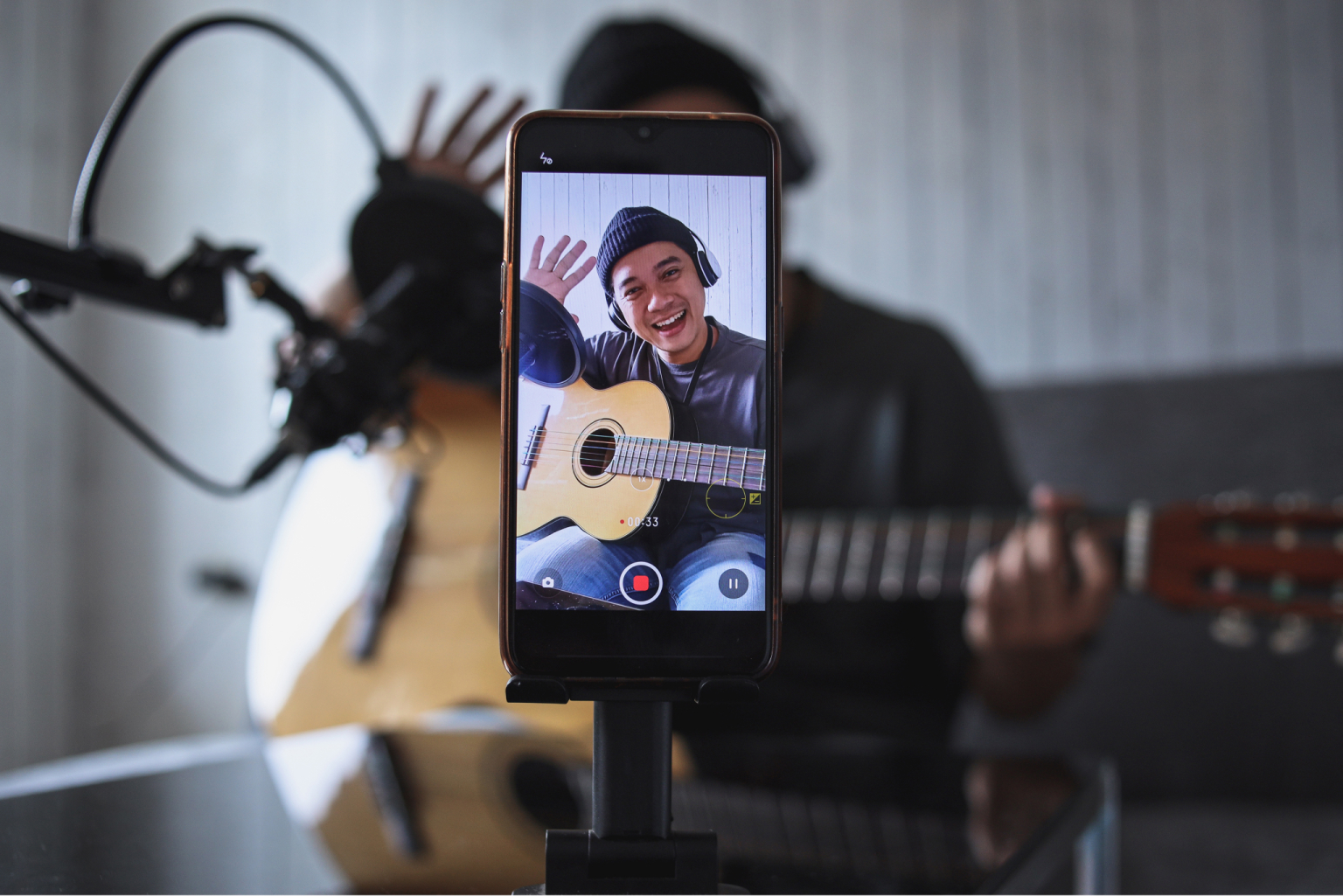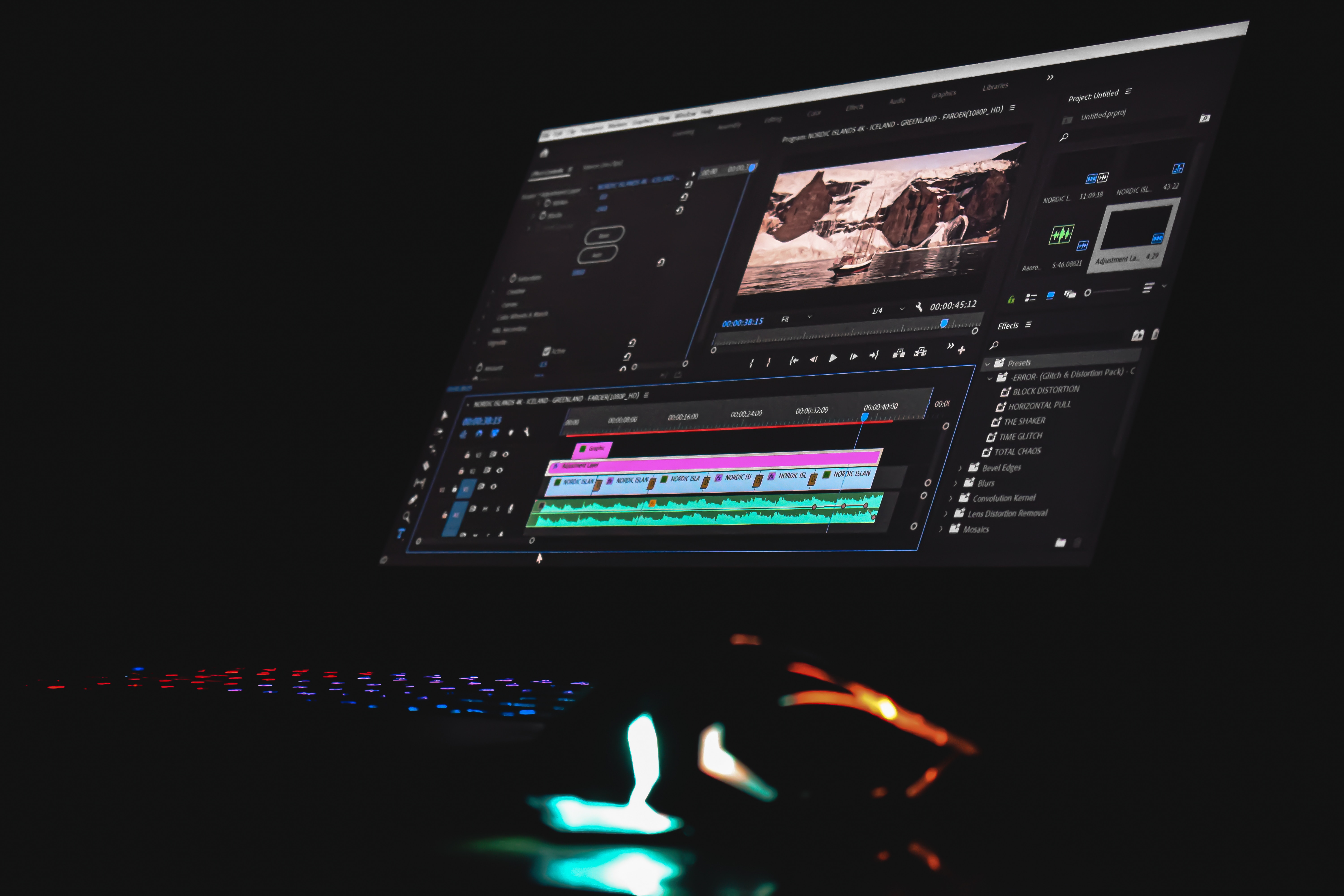Music has a significant impact on media, and that includes YouTube videos. Music can evoke emotion, create ambiance, and make your project more memorable. However, you can’t just pick any song to use in your video.
Most music, especially popular music from the world’s favorite artists, is copyrighted. Using their music without permission can result in your video being taken down and earn you a copyright strike. We've created this comprehensive guide on licensing music for YouTube to help you use the music you want without getting in trouble.
What Is Music Licensing?
When an artist obtains a copyright for a new song, that copyright ensures the music isn’t used without authorization and that when it is used, the copyright holder receives credit and compensation.
The artist may decide to license their music to receive that credit and compensation. People, including content creators, purchase a license for the music they want to use. This ensures the artist gets paid and the content creator can use the music without fear of infringing on copyright law.
There are several types of music licenses. The one you’ll most likely need to legally use a song on YouTube is a media producers license, sometimes called a blanket license or synchronization (synch) license. This license is for synching music to media, including YouTube videos.
Other types of music licenses include:
- Audio-only license. This is for use in a public environment, like a commerce or retail space. When you walk into a store and hear music playing, that’s because of an audio-only license.
- Extended license. This is if you copy and distribute the music, like making a mix CD for clients or employees.
- Mechanical license. This is typically used when one artist wants to create a cover of another artist’s work.
- Master license. This is similar to a synch license but applies when you’re trying to use the master recording of a song.
YouTube's Copyright Policy and Content ID
YouTube’s copyright policy states: “Creators should only upload videos that they have made or that they're authorized to use. That means they should not upload videos they didn't make, or use content in their videos that someone else owns the copyright to, such as music tracks, snippets of copyrighted programs, or videos made by other users, without necessary authorizations.”
All YouTube users have access to the company’s copyright management tools. If a copyright owner discovers their music in an unauthorized YouTube video, they can file a Digital Millenium Copyright Act (DMCA) copyright claim. If YouTube determines the claim is valid, it will remove the offending video and issue a copyright strike.
The first time you receive a YouTube music copyright strike, you must go through YouTube’s Copyright School. After the third strike, your account is subject to termination. All the videos on your account will be removed, and you cannot create new channels.
You're granted a courtesy period if you’re part of the YouTube Partner Program. You get seven days to act before your channel is disabled, allowing you to seek a resolution for your strikes.
YouTube also offers Content ID for artists with more complex copyright management needs. Artists upload their copyrighted songs for reference, and when new content is uploaded to YouTube, Content ID scans the database for a match.
The copyright owner determines what should happen if their song is found in a video. They have three options:
- Block the video from being viewed.
- Run ads against the video to monetize it.
- Track the video’s viewership statistics.
Video creators do not receive a copyright strike if Content ID flags their content.

How To Avoid a Copyright Strike
There are a few different ways to use music in YouTube videos without risking a copyright strike.
What music can you use on YouTube? You can use licensed music, public domain music, or royalty-free tracks.
Licensing Music for Your Video Uploads
So, can you use copyrighted music on YouTube without getting a strike? Using copyrighted music on YouTube requires obtaining a license. This isn’t always easy, and it requires finding out who owns the copyright, tracking them down, and getting permission to use their music.
Finding the Copyright Holder
Music rights aren’t always black and white. Just because an artist released a song doesn’t mean they’re the copyright holder. Often the copyright holder is the record label or music publisher.
You can do a few things to determine who owns the copyright to a song. One way is to search the United States Copyright Office’s Official Public Catalog.
You only need to type the song title to pull up a list of matches. Find the correct one, and when you click on the entry, you’ll learn who holds the copyright.
Other sources that can help you find the copyright owner include:
- American Society of Composers repertory search
- Broadcast Music, Inc. Songview search
- Christian Copyright Licensing International (CCLI)
- Music Services song search
- Society of European Stage Authors and Composers (SESAC)
- Songfile
- SoundExchange ISRC Search
Another option is to check the album package for information about the copyright holder. This information might be on the back of a CD or in the album insert.
Once you’ve tracked down the copyright owner, you can look them up online. Musicians' websites typically include contact information so you can contact them to arrange a licensing agreement.
Writing a Copyright Permission Agreement
Once you’ve found the copyright owner, you’ll need to reach an agreement with them. Many artists will have licensing contracts of their own, but in some cases, you may need to write a copyright permission agreement yourself.
The best way to do this is to hire a lawyer to walk you through the steps and ensure your contract is legal and valid.
You should also be able to find templates online for a copyright permission agreement letter. However, it’s important to use these with caution because they may not be valid or legally binding.
Writing your own music copyright permission agreement is cumbersome and not recommended. Instead, look for public domain music or, even better, use royalty-free tracks.
Using Public Domain Music
Public domain music is music anyone can use, as no exclusive intellectual property rights apply.
However, just because a song is in the public domain doesn’t mean all recordings of that song are public domain. For example, “Twinkle Twinkle Little Star” is public domain, but an artist can copyright their specific composition and recording. So, while you would be free to sing that song in your video, you would likely need a license for a recorded version.
In the U.S., all songs published in 1927 or earlier are public domain. In most countries other than the U.S., music enters the public domain 70 years after the author’s death.
Examples of well-known songs in the public domain include:
- Amazing Grace
- Ave Maria
- Daisy Bell (aka Bicycle Built for Two)
- Danny Boy
- Drunken Sailor
- Flight of the Bumble Bee
- Funiculi Funicula
- Fur Elise
- Jolly Good Fellow
- Many children’s songs, like Old MacDonald Had a Farm, Rock A Bye Baby, Row Row Row Your Boat
- Many Christmas songs, like Away in a Manger, Deck the Halls, and Jingle Bells
- Nutcracker Suite
- Oh! Susanna
- Star Spangled Banner
- Swing Low Sweet Chariot
- Yankee Doodle
Using Royalty-Free Tracks
Royalty-free music is a type of music license that doesn’t require users to pay an ongoing fee to the copyright owner. Instead, users pay a one-time fee, regardless of distribution, estimated usage time, or song purpose.
Music licensing companies like StockMusic.net offer extensive music libraries of both popular and original music. You pay the licensing company to use the music in your projects. The licensed music is cleared for monetization and uses on social platforms.
Through StockMusic.net’s library, you can sort through music using filters like:
- Artist, with over 150 to choose from
- Genre, including adventure, classical, fantasy, horror, pop, rock, and suspense
- Instruments, including banjo, orchestra, piano, strings, and ukulele
- Length, ranging from zero to 10+ minutes
- Mood, including edgy, fun, haunting, hopeful, and somber
- Tempo, ranging from zero to 350+ beats per minute
- Vocal, including choir, duet, female, and male
StockMusic.net also offers a library of sound effects, including:
- Animal
- Drone
- Explosion
- Fire
- Impact
- Sports and recreation
- Technology
- Vehicle
- Water
- Weapon
- Weather and nature
Source Excellent Royalty-Free Music From Stock Music
Stock Music provides users a massive library of quality music, including royalty-free stock music. We also offer an audio library for all your sound effects needs. You can purchase individual music licenses or sign up for unlimited monthly subscription plans.
All music in our library is cleared for monetization by Facebook, Instagram, Twitch, Twitter, and YouTube. Find music you can use on YouTube today at StockMusic.net.




